Chinese missiles based on the Soviet P-15 anti-ship missiles
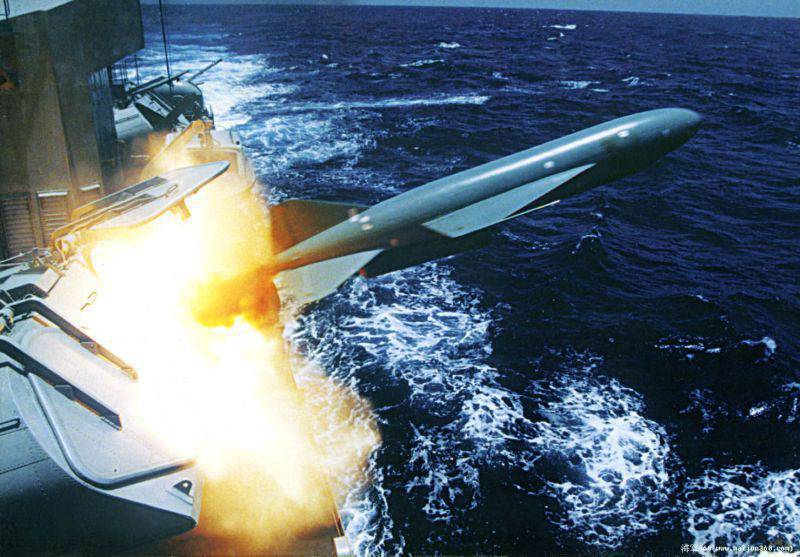
For a long period of time, the People's Liberation Army of China was armed with P-15 anti-ship missiles and processed Chinese clones created on the basis of Soviet anti-ship missiles. After the establishment of diplomatic relations with the United States, purchases of modernized P-15M missiles were carried out in Egypt, which made it possible to create and put into production new modifications with improved characteristics.
CRC SY-1
In the first post-war decade, the Soviet fleet was many times inferior to the US Navy. To correct the situation, the Soviet leadership took "asymmetric measures": the mass construction of submarines and the creation of anti-ship missiles designed for coastal complexes, arming boats, ships and bombers-missile carriers of the sea. aviation.
In the early 1960s, the Soviet Union was significantly ahead of the NATO naval forces in the field of anti-ship missiles. At that time, most Western naval experts treated guided anti-ship missiles with disdain, not considering them an effective means of armed struggle at sea. The opinion of foreign experts changed dramatically after the successful use of the Soviet P-15 anti-ship missiles during the Arab-Israeli armed conflict of 1967, which subsequently gave rise to a real “naval missile boom”.
In the 1960s, the most massive Soviet anti-ship missile was the P-15 with a liquid-propellant rocket engine. Self-igniting upon contact components were poured into the rocket tanks: fuel TG-02 (Tonka-250) and oxidizer AK-20K (based on nitrogen oxides). The P-15 engine operated in two modes: accelerating and marching. On the cruising section of the flight, the rocket flew at a speed of 320 m / s. The range of missiles of the first modifications reached forty kilometers. The curb weight of the rocket was 2125 kg. Length - 6,425 m. Body diameter - 0,76 m. Wing span - 2,4 m.
An autonomous guidance system was installed on the P-15 rocket, which included a radar or thermal homing head, an autopilot and a barometric altimeter, which made it possible to keep the flight altitude within 100-200 meters above the surface. A high-explosive-cumulative warhead weighing 480 kilograms guaranteed a reliable defeat of destroyer-class warships. Target acquisition by the homing system was possible at a distance of about 20 km.
Shortly before the termination of military-technical cooperation with the USSR, a batch of P-15 anti-ship missiles and their carriers, Project 183R missile boats, were delivered to the PRC. In addition, China received technical documentation for missiles, which made it possible to launch their production at the aircraft factory No. 320 in Nanchang.
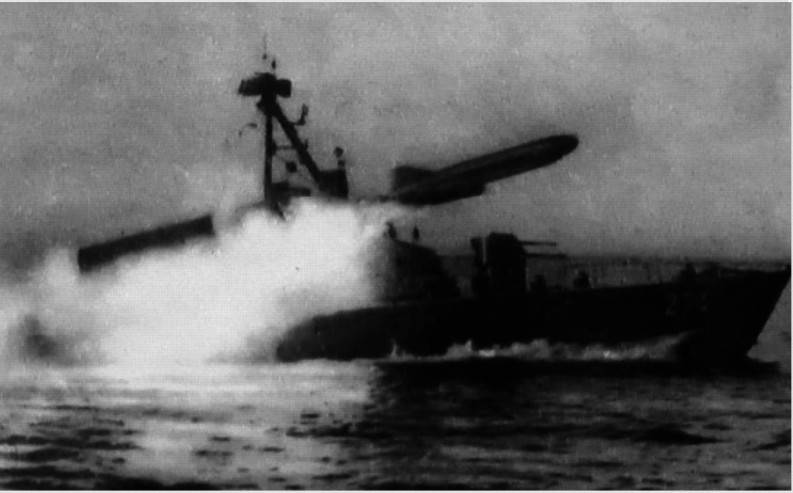
Launch of anti-ship missiles P-15 from a missile boat pr. 183R
In China, P-15 missiles were named SY-1. In addition to missile boats, they armed frigates pr. 053 (Jianghu type), created on the basis of the Soviet TFR pr. 50, and coastal missile units.

RCC SY-1 on display at the Military Museum of the Chinese Revolution
At first, the operation of the SY-1 went with great difficulties, the Chinese clearly lacked experience, knowledge and production culture, and the quality of missile manufacturing was very low. There were frequent cases of leakage of fuel and oxidizer, which spontaneously ignited on contact, which led to explosions and fires. Nevertheless, the SY-1 anti-ship missiles became quite massive and were actively operated by the PLA until the early 1980s.

In general, Chinese specialists followed the Soviet path of improving the P-15 family of anti-ship missiles, but moved much further in this direction. At a time when new designs of modern anti-ship missiles with supersonic flight speeds had already been created in the USSR, the PRC continued to improve old designs, equipping them with solid-propellant and turbojet engines.
In the second half of the 1970s, an improved version, the SY-1A anti-ship missile, entered service. The main differences from the earlier model was the use of a new pulse-jamming seeker and a radio altimeter. In the modification of the SY-1A missile, it was possible to get rid of leaks and achieve the possibility of a sufficiently long storage of anti-ship missiles in a filled form.
CRC SY-2
Due to the complexity of operating missiles with liquid-propellant rocket engines, for which toxic fuel and a caustic oxidizer that ignited combustible materials were used, an attempt was made to create an anti-ship missile SY-2 with a solid fuel engine. However, the Chinese chemical industry in the 1970s could not produce solid fuel formulations with the necessary characteristics, and due to a significant drop in firing range, the mass production of anti-ship missiles SY-2, unable to hit targets at a distance of more than 30 km, was considered inappropriate.
PKR HY-1
The further development of the Chinese anti-ship missiles was aimed at increasing the speed and range of flight, the noise immunity of the seeker and the warhead power, which led to the creation of the HY-1 series missiles.
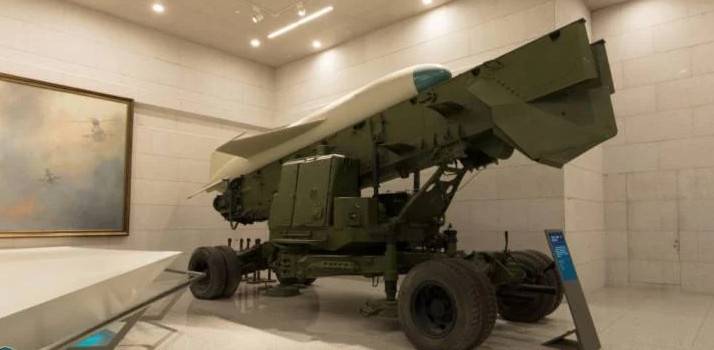
Anti-ship missiles HY-1 on a towed launcher on display at the Military Museum of the Chinese Revolution
Improved versions with a new active radar seeker were designated as HY-1J and HY-1JA. Missiles of this type carried a cumulative warhead weighing more than 500 kg.
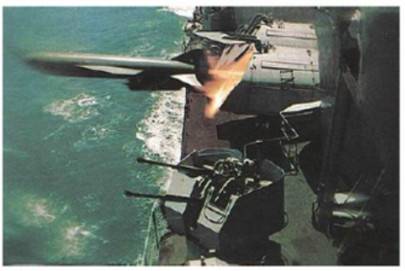
Chinese destroyers, Project 051, and coastal divisions were armed with such anti-ship missiles.
PKR HY-2
After Chinese specialists got acquainted with the Soviet P-15M anti-ship missiles delivered from Egypt, the process of improving Chinese missiles received a new impetus. The missile with an upgraded guidance system and increased range was named HY-2 (the export version was designated C201).
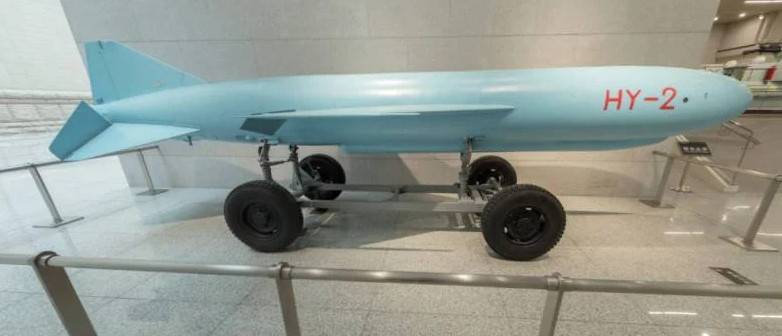
RCC HY-2 on display at the Military Museum of the Chinese Revolution
Thanks to larger tanks, the flight range increased to 100 km. But at the same time, an increase in the supply of fuel and oxidizer on board led to an increase in the dimensions of the rocket, making it impossible to place it on ship launchers. For this reason, the HY-2 anti-ship missiles were used only as part of coastal missile systems.
In the 1980s, the production of rockets with ampoule tanks began. Fueled missiles could be at the starting position for a long time. Their maintenance was also facilitated, and the risk for settlements was reduced. The launch of anti-ship missiles of the HY-2 family was carried out by increased power solid-propellant boosters.
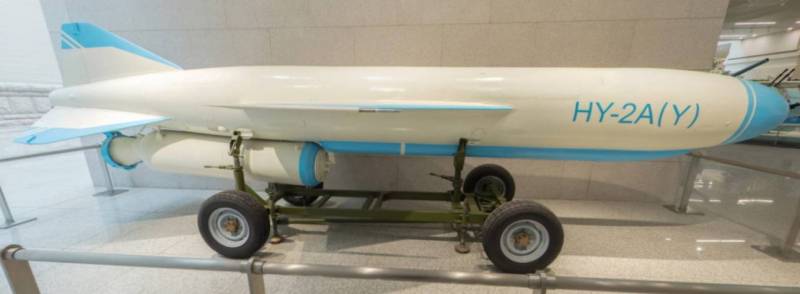
RCC HY-2A with solid fuel accelerator
The HY-2A modification missile was equipped with an infrared seeker, and the HY-2B and HY-2G were equipped with monopulse radar seekers, and the HY-2C was equipped with a television guidance system. The probability of hitting a target in the event of its capture by a radar seeker in the absence of organized interference was estimated to be 0,8.
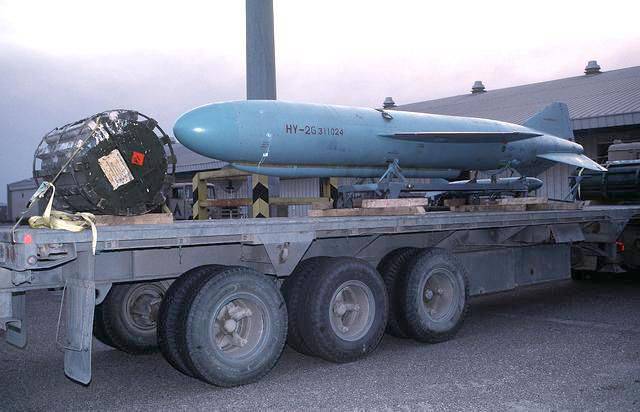
PKR HY-2G
On the HY-2G modification, an improved radio altimeter and a programmable controller were introduced. This made it possible to use a variable flight profile, which significantly complicates the detection and interception of an anti-ship missile by the ship's air defense systems.
CRP YJ-6
The successes achieved in the field of improving the reliability and safety of storage, transportation and use of anti-ship missiles with rocket engines made it possible to create the first Chinese air-based anti-ship missiles YJ-6K, which were carried by long-range H-6 bombers. This missile, put into service in 1985, could hit targets at ranges up to 90 km.
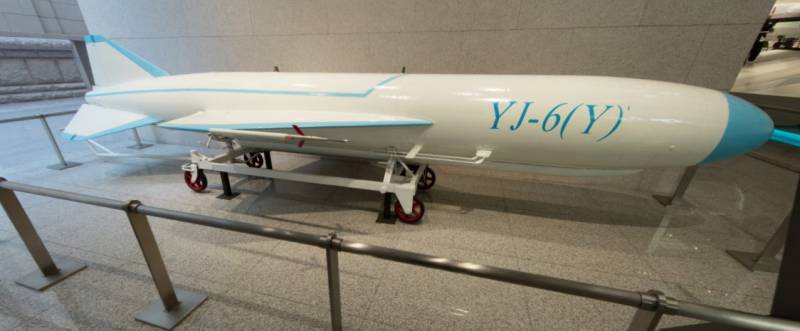
YJ-6 airborne anti-ship missiles on display at the Military Museum of the Chinese Revolution
Compared to the HY-2, the YJ-6 RCC has a slightly shorter length and launch weight. In connection with the air launch, the solid propellant accelerating engine is not used. The main engine starts after separation from the carrier. The flight to the target at the final stage can be programmed at altitudes of 500, 100 or 50 m.
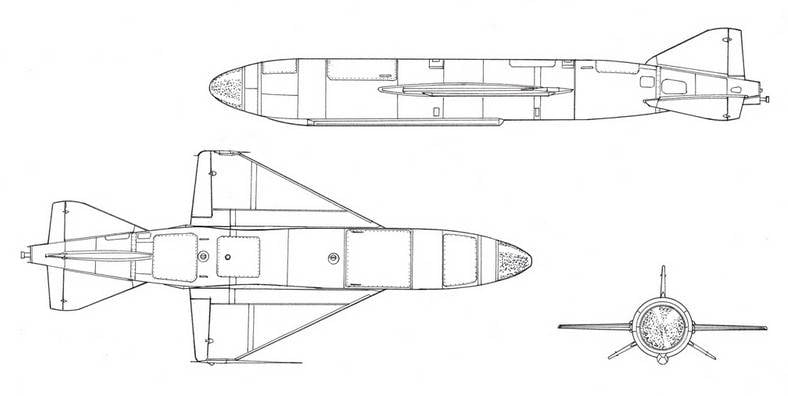
General view of the projections of the YJ-6 cruise missile
During the modernization carried out in 1988, a new guidance system was installed, after which the probability of hitting in a simple jamming environment reached 90%. The firing range against a destroyer-type target has been increased to 110 km. The practical range of the missile when launched from a height of 9000 m is 150 km, but at such a range, the H-6D radar could only see very large ships.
The YJ-6K missile was the first of the Chinese anti-ship missiles to receive built-in radar jamming equipment. At present, the YJ-6K has been withdrawn from combat missile carriers, but continues to be used for training purposes and as a target. The export version of the YJ-6 is known as the C601K. This anti-ship missile was delivered along with H-6D carrier aircraft to Iraq and Egypt.
In the late 1980s, the PRC tested and put into service the YJ-61 aviation anti-ship missiles, created on the basis of the YJ-6K.
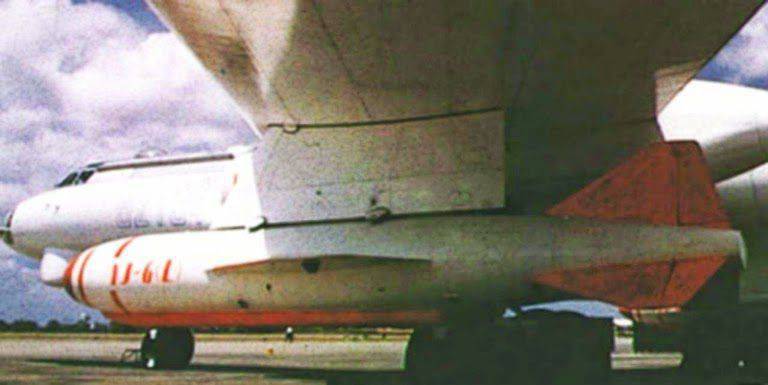
RCC YJ-61 under the wing of the H-6 missile carrier
The YJ-61 did not differ much in its control system from the YJ-6K, but had an elongated fuselage, which ensured a flight range of up to 200 km. Some Western sources suggest that the increase in flight range was achieved due to the introduction of a more economical engine and the use of a new fuel composition.
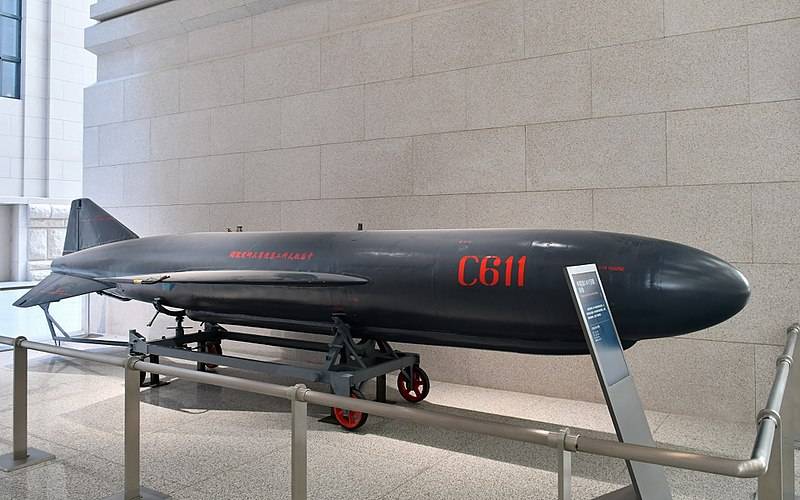
RCC С611 in the exposition of the Military Museum of the Chinese Revolution
The Chinese YJ-61 air-to-ship missile was offered to foreign buyers under the designation C611.
The latest modification of this model range, known as C611Y, is equipped with a new guidance system built on a solid-state element base.
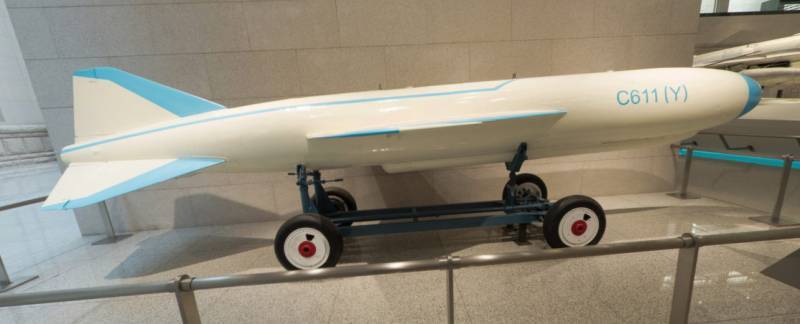
RCC S611Y
After being dropped from an aircraft, the missile flies according to a pre-prepared program, only in the final section using an active radar seeker to search for a target. A missile carrying a warhead weighing 300 kg has a speed of about 320 m / s in the marching section, and at the final stage of the flight it can dive at a speed of more than 400 m / s. The minimum flight height is 50 meters.
PKR HY-4
During the years of the Vietnam War, Chinese specialists were able to study in detail the American AQM-34 reconnaissance unmanned aerial vehicle and copy the Teledyne-Ryan CAE J69-T-41A turbojet engine installed on it. Subsequently, a Chinese clone of this turbojet engine, known as the WS-11, was used on Chinese drones and RCC HY-4.
The HY-4 missile with a launch range of up to 150 km, put into service in 1983, was a combination of guidance and control systems from the HY-2G anti-ship missiles with a turbojet engine.
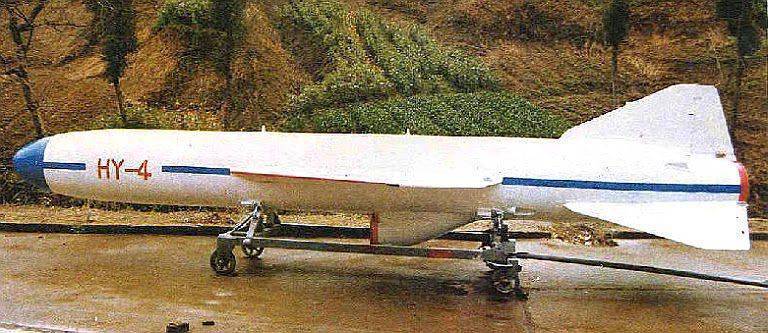
PKR HY-4
Externally, the HY-4 RCC differs from the HY-2G in the presence of a lower air intake. A modification of the HY-4 missile, intended for export, received the designation C-201W.
An improved version of the HY-4 was designated HY-41. According to Chinese media, the coastal missile division of the HY-41 complex can destroy targets in the +/- 85 ° sector, which, with a launch range of 250-300 km, depending on the flight profile, allows covering a sea area of \u14b\u000bXNUMX km².
CRP YJ-63
Another version of the HY-4 anti-ship missiles is the aviation YJ-63 (C603), which was put into service in 2002. This is China's first air-to-surface air-to-surface missile equipped with a turbojet engine, capable of hitting both ground and surface targets with high accuracy. Outwardly, she retained many features of previous models of anti-ship missiles and partially borrowed on-board equipment.
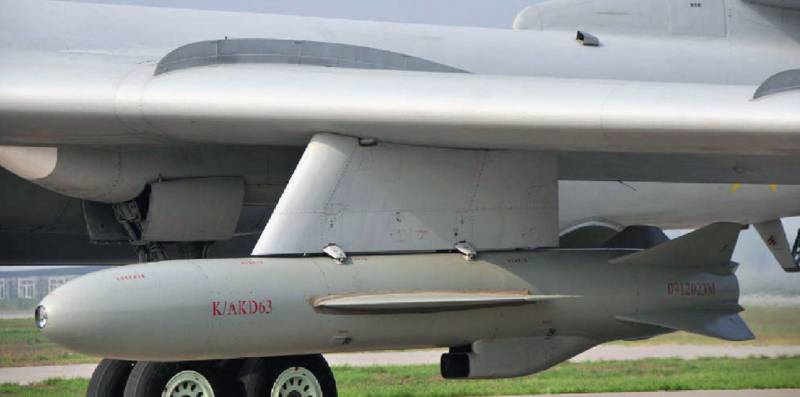
RCC YJ-63 under the wing of the H-6 missile carrier
At the initial stage of the flight, the YJ-63 is controlled by an inertial system, in the middle section there is a correction using satellite navigation, and at the final stage, a television guidance system is activated.
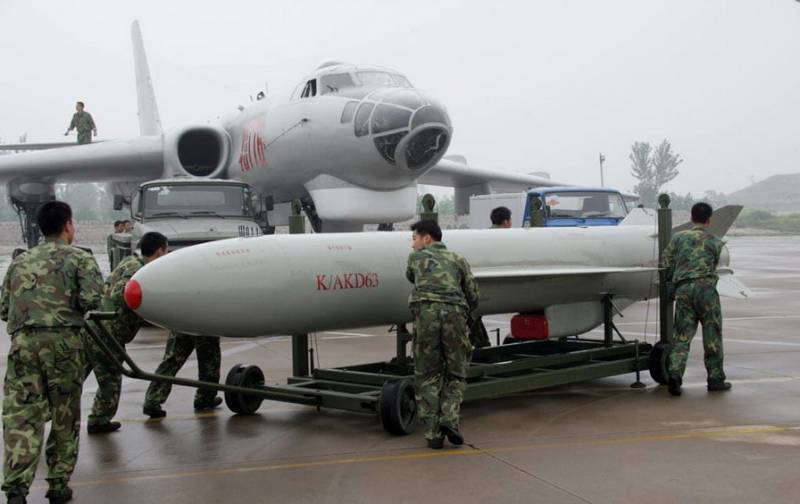
In 2005, a variant of the rocket with a radio-transparent nose fairing was demonstrated, under which, apparently, there is a radar seeker. The launch range of the YJ-63 anti-ship missiles is within 180 km, but at subsonic flight speed, this very massive missile, carrying a 500 kg warhead, will be vulnerable to modern shipborne air defense systems. To organize electronic countermeasures for radar detection and guidance stations for anti-aircraft systems, there is a radar exposure detection receiver on board, which includes a built-in active jamming station. Western sources claim that the YJ-63 can be equipped with a 20-90 kt nuclear warhead.
The use of Chinese anti-ship missiles based on the P-15
In the past, China actively exported anti-ship missiles from coastal, sea and air-based rocket engines. Missiles created on the basis of the P-15 anti-ship missiles were supplied to Albania, Bangladesh, Egypt, North Korea, Cuba, Iran, Iraq, Myanmar, Sudan, Pakistan and Zaire. North Korea and Iran have established their own production of anti-ship missiles under Chinese licenses.
These missiles, known in the West as "Silkworm" (eng. Silk Warm - Silkworm), were used by both sides during the Iran-Iraq war, and they hit several tankers, oil platforms and terminals.
On February 25, 1991, the American battleship USS Missouri (BB-63) was fired upon by two HY-2G missiles from a coastal complex. After the missiles were detected by the radars of American and British ships, thermal and radar jamming systems were activated. During the reflection of the missile strike, it turned out that the Phalanx short-range self-defense artillery guidance radar equipment does not see missiles, but reacts to false targets. Shells fired from the 20-mm anti-aircraft gun of the frigate USS Jarrett (FFG-33) hit the battleship Missouri, but did not cause much damage, and no one was injured.
As a result, one anti-ship missile was taken away by traps and fell into the sea, and the other was shot down by a Sea Dart anti-aircraft missile launched from the British destroyer HMS Gloucester (D96). An Iraqi report released after the end of the conflict stated that three missiles had been fired at the American ship. But if this is true, it is very likely that the third anti-ship missile went so far from its target that it was not even noticed by the detection systems of the American and British ships.
During Operation Desert Storm, the Americans captured or destroyed all Iraqi anti-ship missiles located on the Fao Peninsula.
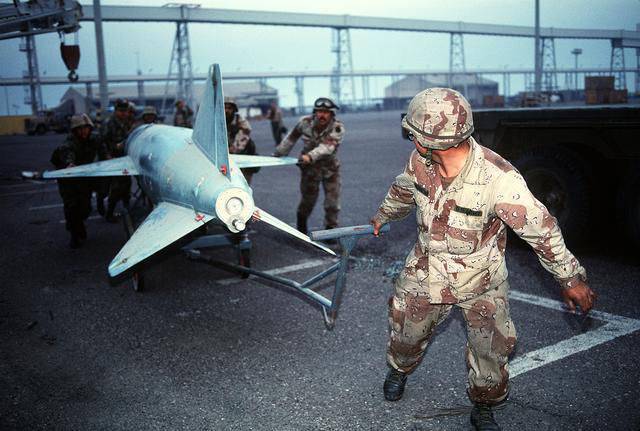
In October 1991, 30 captured missiles were taken to the United States. Part of the captured "Silkworms" was sent to several bases, where they are still located as a kind of monuments. Several missiles were delivered to laboratories and to the US Navy Experimental Armaments Zone in China Lake for testing and development of countermeasures.
In 1997, during the Second Congo War, Zairian troops fired HY-2 missiles at rebel positions. Quite predictably, the use of anti-ship missiles with a disabled homing system as "flying bombs" did not bring any results.
In 2003, Iraq tried to strike Chinese anti-ship missiles at ground targets in Kuwait. Of the 16 rockets fired, 15 were intercepted by air defense forces or fell in the desert, and one rocket hit a shopping center in the city of Sook Chark, injuring two people.
Currently, without exception, all the missiles described in this publication are outdated. However, it is worth recognizing that Chinese specialists managed to squeeze everything they could out of the basic design of the Soviet P-15 anti-ship missiles, creating a line of sea, air and ground-based cruise missiles. Thanks to the introduction of various improvements and an increase in the capacity of the fuel and oxidizer tanks, it was possible to significantly increase the firing range. The introduction of various types of targeting systems has not only improved noise immunity, but also diversified options for use for various purposes. In particular, thanks to the use of passive radar seekers, it became possible to destroy working ground and shipborne radars.
The first generation of Chinese anti-ship missiles, based on Soviet counterparts, went through an independent development path. Despite the archaic appearance, Chinese anti-ship missiles, created on the basis of the Soviet P-15 missile, still continue to be in service with the coastal units of the PLA Navy. They are also carried by long-range bombers. But on the warships of the Chinese fleet old LRE missiles have already been replaced by modern anti-ship missiles of Chinese and Russian production.
Decommissioned anti-ship missiles are being converted into air targets designed to support the process of combat training of air defense crews and testing new anti-aircraft systems.
To be continued ...
Information